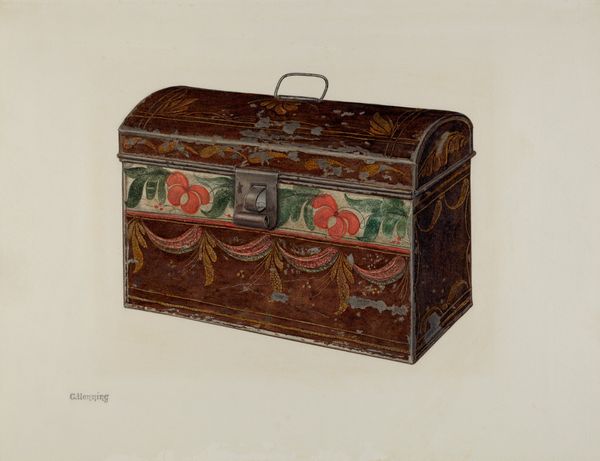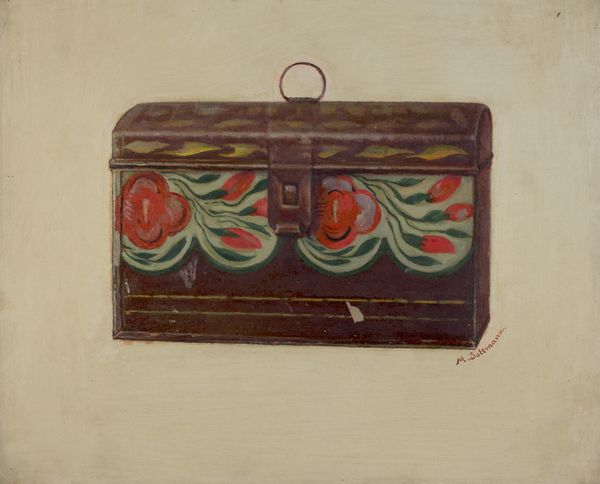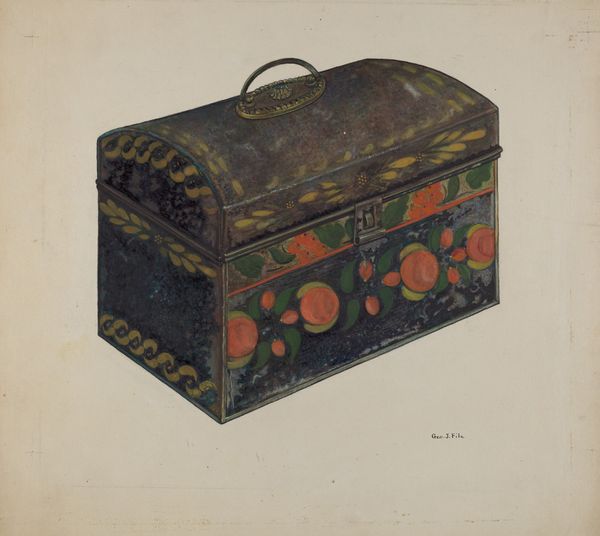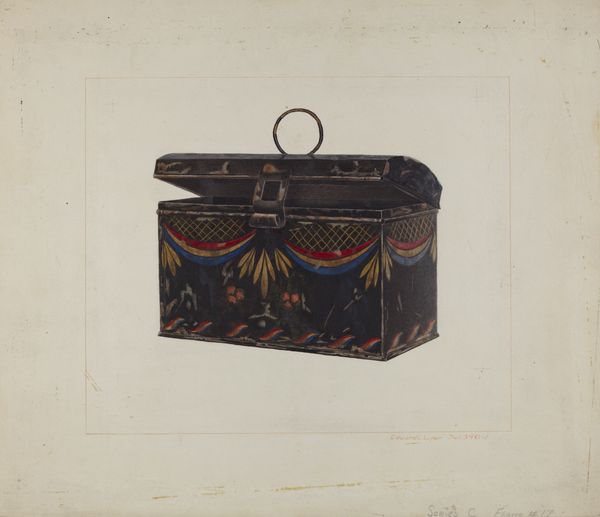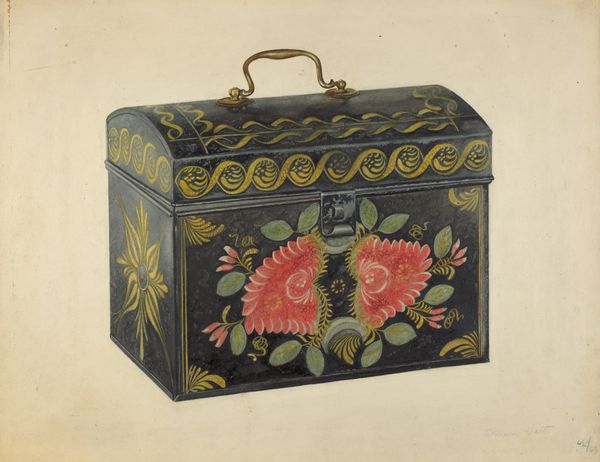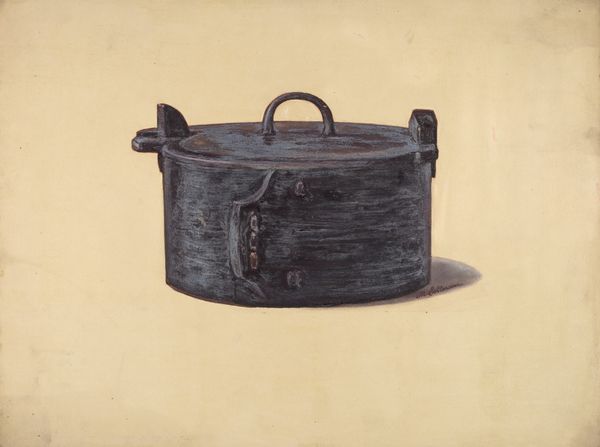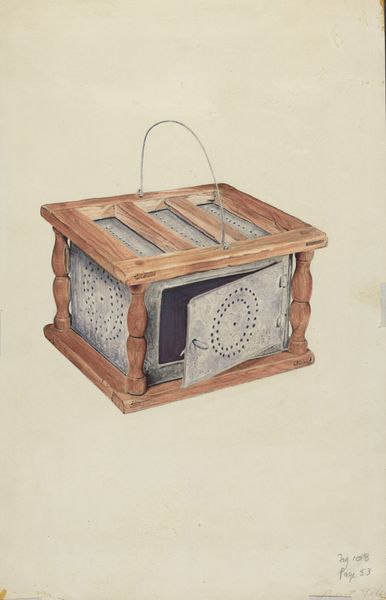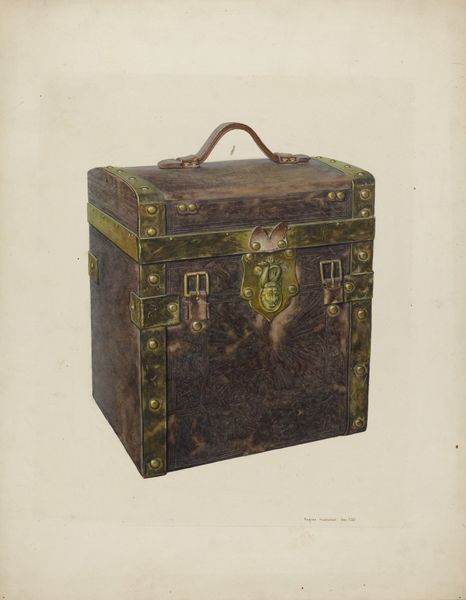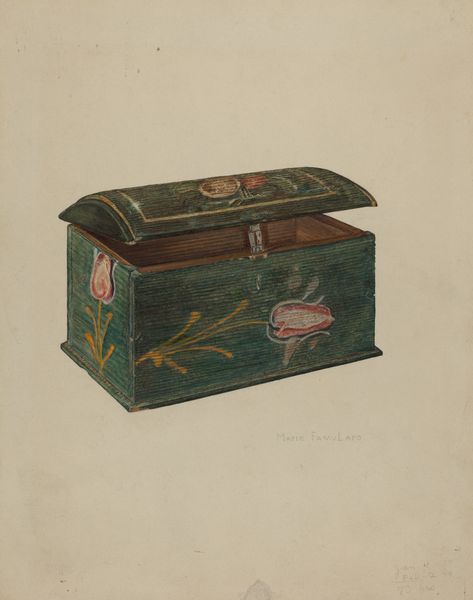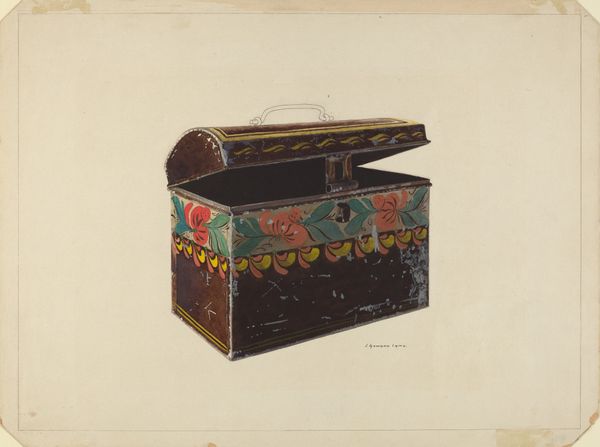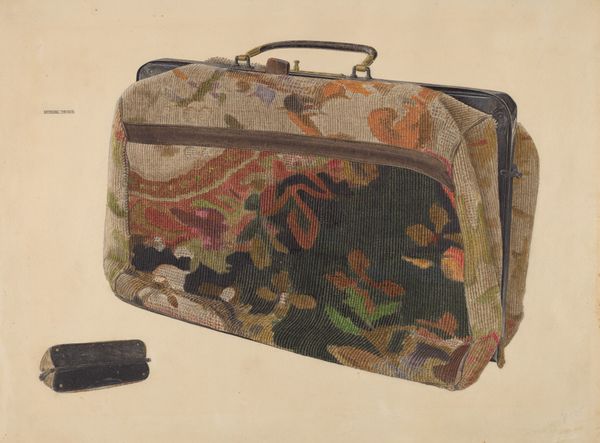
drawing, watercolor
#
drawing
#
oil painting
#
watercolor
#
coloured pencil
#
folk-art
#
watercolour illustration
#
regionalism
#
watercolor
Dimensions: overall: 24.4 x 35.5 cm (9 5/8 x 14 in.)
Copyright: National Gallery of Art: CC0 1.0
Editor: This is Edward L. Loper's "Lunch Box," dating to around 1938. It looks like a watercolor and drawing. The box is decorated with some gorgeous floral designs, almost like folk art. It's making me think about what people carried every day... What strikes you about this piece? Curator: Well, immediately, I'm drawn to the labor implied. It's a manufactured object, a lunch box, clearly used by a worker, then elevated through hand-painted decoration. We see a convergence of industrial production and individualized craft. Think about the societal context: what kind of worker might have used such a decorated lunchbox? And where? Editor: Hmm, good point. It also speaks to a culture valuing both function and personal expression. Is the folk-art style design meaningful in relation to that? Curator: Precisely. The floral design might suggest a longing for nature amidst an industrialized setting, or perhaps it’s an assertion of identity, a small rebellion against the monotony of factory work. Consider the materials used to create this image as well – the pigments, paper, the techniques employed in watercolor. They are testaments to skill and resources, each component playing its role. How does its medium help us see it in a different way? Editor: It being a watercolor sort of softens it...Makes me wonder if it was a design sketch, rather than a painting "of" the lunchbox, which suggests design's essential role in bringing both usefulness and beauty to laborers’ everyday lives... Curator: Exactly! It could also reflect a regionalist sentiment, highlighting everyday objects and scenes rather than grand historical narratives, celebrating ordinary labor. So, we started with a simple lunch box, but through considering the material realities, it unveils layered insights. Editor: I see! So much more than just a painted lunchbox. The materials and social context completely transform my understanding. Curator: Indeed. By examining the material conditions of its creation and use, we move beyond simple aesthetics to uncover deeper cultural meanings.
Comments
No comments
Be the first to comment and join the conversation on the ultimate creative platform.
